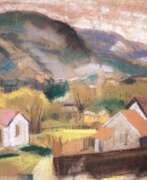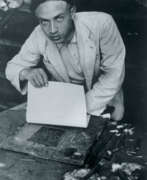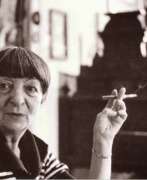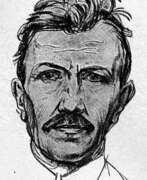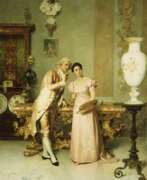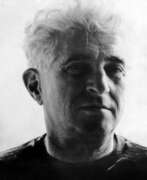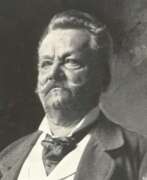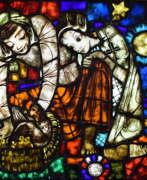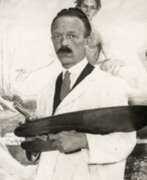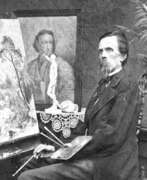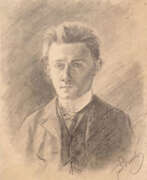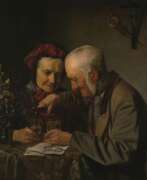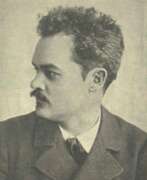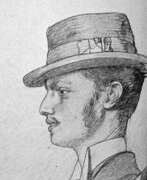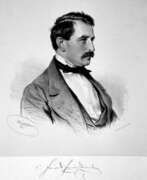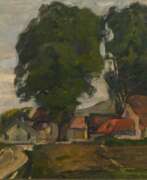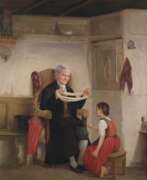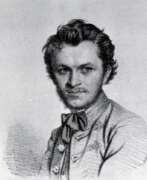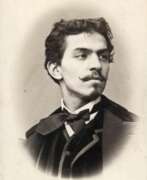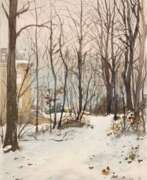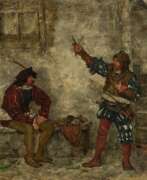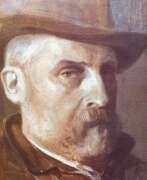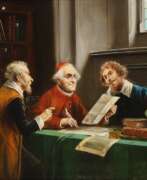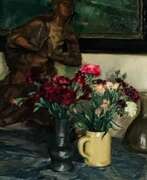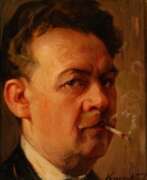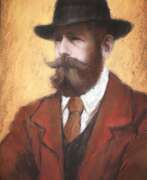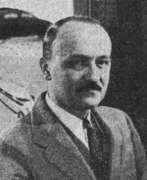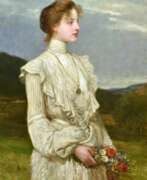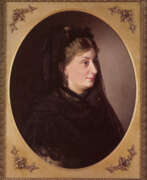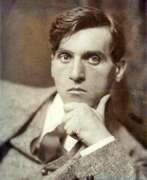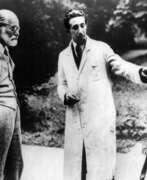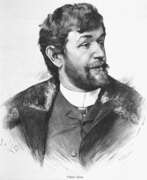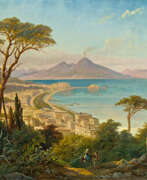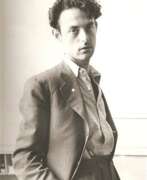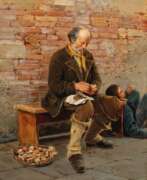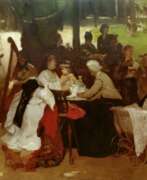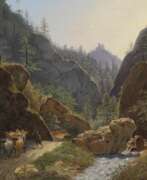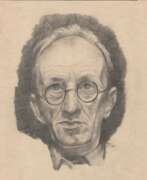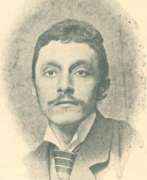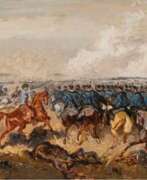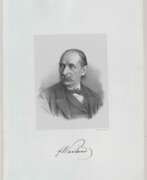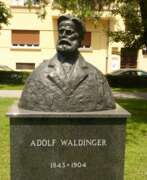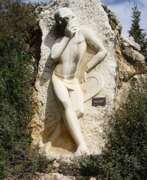Artists Austria-Hungary (1868-1918)
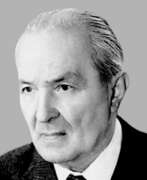

Vilmos-József Istvanovich Berets (Russian: Вильмош-Йожеф Иштванович Берец) was a Ukrainian Soviet artist of the second half of the twentieth century of Hungarian origin. He is known as a painter, graphic artist, teacher, and art historian.
Berets created works mainly in easel graphics, among his most outstanding works are watercolor landscapes. Since 1950 he actively participated in art exhibitions. He was also the author of articles on the theory of art, as well as studies on various artists, including the work of Transcarpathian artists, in the course of which the master collected extensive archival material on the history of the local school of painting.
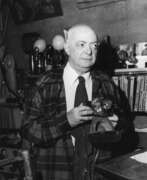

Brassaï, whose real name was Gyula Halász, was a Hungarian-French artist and photographer best known for his work documenting the streets of Paris during the 1920s and 1930s. He was one of the key figures of the Surrealist movement and his work continues to influence photographers and artists to this day.
Brassaï moved to Paris in the 1920s to pursue a career in art. He initially worked as a journalist and began taking photographs to accompany his articles. However, it was his nocturnal photographs of the city that would bring him international fame.
Brassaï's photographs of the streets of Paris at night captured the city's seedier side, including its prostitutes, bars, and cabarets. His work is known for its use of dramatic lighting and strong contrast, which helped to create a moody, evocative atmosphere.
In addition to his photography, Brassaï was also a talented painter and sculptor. He was a close friend of many of the leading artists and writers of the time, including Pablo Picasso, Salvador Dalí, and Henry Miller.
Brassaï's work has been exhibited in major museums and galleries around the world, and his photographs have been published in numerous books and magazines. He was one of the most influential photographers of the 20th century, and his legacy continues to inspire artists and photographers today.


Robert Capa is a Hungarian-American photographer and photojournalist. He is considered one of the greatest war photographers of all time, known for his dramatic images of combat and conflict. Cornell Capa's older brother and a classic of documentary photography.
Capa began his career as a photographer in the early 1930s and soon became known for his coverage of the Spanish Civil War. He went on to cover many major conflicts, including World War II, the First Indochinese War and the Arab-Israeli War.
One of Robert Capa's most famous photographs is Falling Soldier, taken during the Spanish Civil War. The photo depicts a Republican soldier as he is shot and falls to his death. The authenticity of the photograph has been the subject of controversy for many years, but it remains an iconic image of war photography.
Capa also co-founded Magnum Photos, which was established in 1947 as a cooperative for independent photographers. Since then Magnum Photos has become one of the most prestigious and influential photo agencies in the world.
Capa died in 1954 while covering the First Indochina War, stepping on a mine. His legacy as a war photographer and photojournalist continues to inspire generations of photographers and his work remains an important part of photographic history.
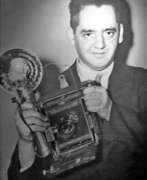

Arthur (Usher) Fellig, known by his pseudonym Weegee, was a photographer and photojournalist, known for his stark black and white street photography in New York City.
Weegee worked in Manhattan's Lower East Side as a press photographer during the 1930s and 1940s and developed his signature style by following the city's emergency services and documenting their activity. Much of his work depicted unflinchingly realistic scenes of urban life, crime, injury and death. Weegee published photographic books and also worked in cinema, initially making his own short films and later collaborating with film directors such as Jack Donohue and Stanley Kubrick.
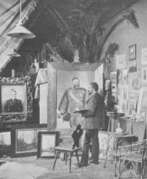

Georg Fischhof was an Austrian portrait, figure and landscape painter.
Fischhof initially studied architecture, but later devoted himself to painting and studied at the Vienna School of Applied Arts and in Munich. After his return to Vienna he shifted his work to the painted imitation of tapestries. Frequent subjects are Dutch coastal and harbour views, Italian landscapes by the water and rural scenes with a stream or path. In almost every work there are sketched persons / children with only suggested facial features, often a column of smoke from a chimney and in seascapes frequently seagulls in flight, in Italian views umbrella acacias and cypresses.
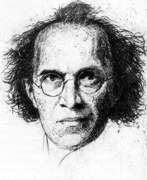

Heinrich Gottselig was a German painter of the first third of the twentieth century of Jewish origin who worked in Germany, France and Russia. He is known as a portrait and landscape painter, impressionist and modernist, and is considered one of the best representatives of the Frankfurt school of landscape and portrait painting.
Gottselig gained recognition at the age of 23 with debut works including portraits and landscapes. In 1913, he was recognized as one of the best representatives of his painting school. In addition to painting, the artist also practiced copper engraving.
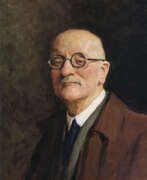

Igor Emmanuilovich Grabar (Russian: И́горь Эммануи́лович Граба́рь) was a distinguished Russian painter, art historian, and museum administrator, whose contributions have left an indelible mark on the world of art. Renowned for his versatility, Grabar was not only a masterful artist but also a visionary in art preservation and education. His work reflects a deep appreciation for Russia's cultural heritage, capturing the essence of its landscapes, historical moments, and architectural beauty with a unique blend of realism and impressionism.
Grabar's significance extends beyond his paintings; he played a pivotal role in the preservation of Russian art, overseeing restoration projects and establishing guidelines that are still in use today. His efforts in cataloging and promoting Russian art helped to elevate the profile of Russian culture on the global stage. Among his well-known works, "February Azure" stands out for its captivating use of color and light, showcasing Grabar's skill in conveying the beauty of Russian winters.
As an educator and museum director, Grabar influenced generations of artists and art historians, embedding a deep respect for artistic heritage and innovation. His leadership at the Tretyakov Gallery and involvement in various art schools helped to shape the direction of Russian art in the 20th century. Grabar's legacy is not just in his artworks but also in his contributions to art education and museum practices, making him a revered figure among collectors, experts, and enthusiasts of art and antiques.
For those passionate about the rich tapestry of Russian art and culture, Igor Emmanuilovich Grabar's work remains a source of inspiration and admiration. We invite collectors and art experts to sign up for updates on new product sales and auction events related to Grabar's work. This subscription is your gateway to the world of a visionary artist whose influence continues to resonate in the art world.


Christian Griepenkerl was an Austro-German painter of the last third of the 19th and early 20th centuries. He is known as a painter and teacher, a professor at the Vienna Academy of Fine Arts.
Griepenkerl created many paintings of historical subjects and themes from ancient mythology, and was also a successful portraitist. As a teacher, he was famous for having twice prevented the young Adolf Hitler from taking the entrance examinations to the Vienna Academy of Fine Arts.


Rudolf Hausleithner was an Austrian painter.
His works primarily include oil paintings with romantic themes, portraits and portrait sketches, petit bourgeois subjects, history paintings and various commissioned works.
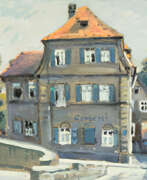

Norbert Hochsider was a German painter and graphic artist. His artistic style was influenced by the German Expressionist movement that emerged at the beginning of the 20th century. Expressionism was characterised by an emphasis on subjective emotion, distorted forms and intense colours. Artists associated with this movement sought to convey their inner feelings and the psychological impact of the modern world.
Norbert Hochsider explored a wide range of subjects in his paintings, including landscapes, figures and still lifes. He has used bold brushes, vibrant colours and dynamic compositions to express his emotional response to the subject matter. His works often reflect intensity, energy and raw emotion.
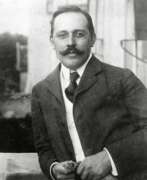

Josef Hoffmann, an Austrian architect and designer, is renowned for his influential contributions to early 20th-century design and architecture. As a founding member of the Vienna Secession and the Wiener Werkstätte, Josef Hoffmann's work is celebrated for its pioneering simplicity and functional elegance.
Josef Hoffmann's designs, which span furniture, decorative arts, and architecture, are distinguished by their minimalistic yet expressive style. His ability to blend aesthetics with functionality marked a significant departure from the ornate styles of the time, influencing modern design principles. Notable works include the Stoclet Palace in Brussels, a masterpiece that showcases his innovative approach to art and architecture.
His creations are preserved in prestigious museums worldwide, including the Museum of Modern Art (MoMA) and the Metropolitan Museum of Art, providing insight into his visionary approach to design. These institutions house collections of Hoffmann's furniture and decorative objects, reflecting his enduring impact on design and architecture.
For collectors and experts in art and antiques, Josef Hoffmann's work offers a study in the evolution of modern design. By subscribing to updates, enthusiasts can stay informed about exhibitions, sales, and academic research related to Josef Hoffmann, deepening their understanding of his contributions to the art and design world.
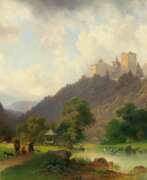

Joseph Holzer was an Austrian painter. He studied at the etching school of the Vienna Academy of Art, then attended the landscape school of Thomas Ender and Franz Steinfeld.
Josef Holzer made study trips to Germany, Belgium and Switzerland. During his stay at Count Palfi's Stampfen Castle in the Carpathians, the majestic poetry of the virgin forests made an indelible impression on him and influenced the master's later work.
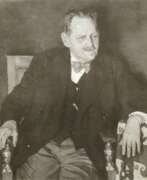

Heinrich Hönich, also known as Jindřich Hönich, was a Czech-German academic artist, graphic designer and teacher.
Hönich studied at the Prague Academy of Fine Arts and the Academy of Fine Arts in Dresden, and lived in Munich from 1906-1928, where he participated in many exhibitions. The artist was mainly engaged in landscape painting and graphics, but also created ex-libris and posters, worked in etching and lithography, was a skillful draughtsman and graphic artist.
From 1928 to 1945 Hönich worked as a professor at the Prague Academy of Art and raised a number of famous artists.
In 1944, Heinrich Hönich was included in the Gottbegnadet list of German artists compiled by the Imperial German Ministry of Public Education and Propaganda under the direction of Joseph Goebbels.


Georg Janny was an Austrian landscape painter and set designer.
He worked as a scene painter in the studios of Carlo Brioschi and Johann Kautsky, alongside Alfons Mucha, and was a member of the Dürerbund.
He also painted landscapes and figures, including scenes from fairy-tales or imaginary worlds that are reminiscent of the works of Arnold Böcklin or Gustave Doré.


Olaf Jordan was a German and Swedish painter of the first half of the twentieth century. He is known as a portrait painter.
Jordan was attached as a war artist to the collaborationist SS Cossack Cavalry during World War II and created many portraits of Cossacks. Some of his work was confiscated by the Americans, who judged the drawings to be apologia for the Nazi regime. Jordan himself remained in Soviet captivity until 1947, after which he moved to Sweden, where he painted mostly portraits of children. Before the war, he worked on a series of depictions of Yugoslav folk types.
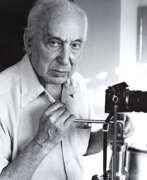

André Kertész, born Andor Kertész, was a Hungarian-born photographer known for his groundbreaking contributions to photographic composition and the photo essay. In the early years of his career, his then-unorthodox camera angles and style prevented his work from gaining wider recognition. Kertész never felt that he had gained the worldwide recognition he deserved. Today he is considered one of the seminal figures of photojournalism.
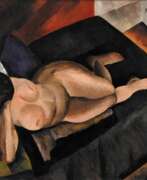

Moïse Kisling was a Polish-born French painter renowned for his contributions to modern art, particularly his highly stylized and evocative portraits. Born in Kraków in 1891, Kisling moved to Paris at the age of 19, quickly immersing himself in the vibrant artistic community of Montmartre and Montparnasse. His work, characterized by bold colors and dynamic compositions, spans a variety of themes, including landscapes, still lifes, and nudes, reflecting influences from Cubism and Post-Impressionism.
Kisling's artistry is celebrated for its unique blend of realism and abstraction, marked by a fluid, colorful style that evolved from his early influences, including Cezanne and Cubism. He was a central figure in the School of Paris, engaging with contemporaries such as Pablo Picasso, Georges Braque, and Amedeo Modigliani, the latter of whom he shared a close friendship and mutual artistic admiration. Modigliani's portraits of Kisling underscore their deep personal and professional bond. Notable works by Kisling include "La Sieste à Saint-Tropez," "Portrait du peintre (Autoportrait)," and "Le pêcheur," showcasing his versatility and skill in capturing the essence of his subjects.
During World War II, Kisling's Jewish heritage forced him to flee to the United States, where he continued to exhibit his work in New York City and California before returning to France after the war. His legacy is preserved in numerous public collections, including the Metropolitan Museum of Art, the National Gallery of Art, and the Brooklyn Museum, among others. This wide recognition attests to his significant impact on the development of modern art.
For collectors and experts in art and antiques, Kisling's work represents a pivotal intersection of cultural and artistic movements of the early 20th century. His paintings are not only visually stunning but also historically significant, embodying the spirit of an era marked by innovation and experimentation. The Musée du Petit Palais in Geneva holds a large collection of his works, offering a comprehensive overview of his artistic journey.
We invite enthusiasts and collectors to stay updated on new discoveries, sales, and auction events related to Moïse Kisling's work. Subscribing to updates ensures you won't miss the opportunity to engage with the rich legacy of this remarkable artist. This subscription is a gateway to exploring the vibrant world of Kisling's art, from his captivating portraits to his lush landscapes and still lifes, all of which continue to enchant and inspire.


Ernő Koch was a Hungarian artist, graphic artist and illustrator. As a student, he worked in summer in printing factories and won several prizes for poster designs. The Hungarian National Bank invited him to participate in a competition for new treasury notes.
Erne Koch's drawings, woodcuts and etchings were used as advertising materials, Christmas cards and brochures.


Jan Kotík was a Czech artist active from the 1940s.
Kotik was a member of Skupina 42 during World War II. Following the war his art was influenced by Chinese calligraphy. In 1956 he attended the Congress of Alba and signed up to the Final Resolution of the Alba Congress.


Nikifor Krynicki, born as Epifaniy Drovnyak, was a Lemko naïve painter. Nikifor painted over 40,000 pictures – on sheets of paper, pages of notebooks, cigarette cartons, and even on scraps of paper glued together. The topics of his art include self-portraits and panoramas of Krynica, with its spas and Orthodox and Catholic churches. Underestimated for most of his life, in his late days he became famous as a naïve painter.
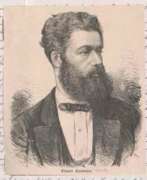

Eduard Kurzbauer was a German-Austrian painter of the second half of the 19th century. He is known as a painter-genre painter, researcher of folk life.
Kurzbauer became known to the public while still an apprentice through his painting The Storyteller. He was admitted to the Piloti Studio in Munich, where he mastered the technique of painting. The following famous paintings of the artist, such as "Caught up fugitives", "Rejected Groom", "Village Feast", "Wine Trial", "Unfounded Jealousy" and others, are characterized by the vitality of the composition, expressiveness of faces, fresh colors and sensuality of color and give a special charm to the themes of folk life.
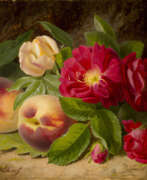

Josef Lauer was an Austrian painter who worked during the Biedermeier period.
Josef Lauer studied painting at the Vienna Academy of Fine Arts under Sebastian Wegmayr, Josef Messmer, Thomas Ender and Franz Steinfeld. Throughout his career he devoted himself exclusively to painting flowers and fruit, becoming the first to incorporate floral still lifes into the landscape; often a forest background.
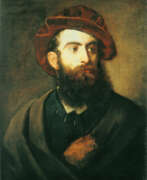

Hans Makart was an Austrian painter of the second half of the 19th century. He became famous as a master of historical painting, still life, allegory, landscape, and portrait. Most of his paintings were painted in the academic style. Makart was also a sought-after stage decorator, costume designer, furniture and interior designer.
Hans Makart was very popular in Vienna, and his studio was a place of attraction for the cream of Vienna's society. After the artist was even named a separate style of art with its characteristic flowing forms and bright colors - "Makartstil". Makart constantly organized grand festivals in his studio, which were willingly attended by members of the imperial family. He made it ultra fashionable to have a new style of interior and soon most of the apartments of wealthy citizens of Vienna were furnished on the model of his salon.
Makart was a professor of historical painting at the Vienna Academy of Fine Arts and head of the Künstlerhaus, the largest exhibition complex in the Austrian capital. In 1879, on the occasion of the silver wedding of the imperial couple, Makart organized a grandiose theatrical performance, the sketches for which have survived to this day.
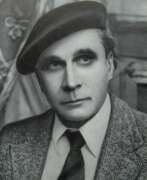

Vitold Antonovich Manastyrsky (Russian: Витольд Антонович Манастырский) was a Ukrainian and Soviet artist of the second half of the twentieth century. He is known as a painter, graphic artist, teacher, and son of the artist Anton Manastyrsky.
Vitold Manastyrsky created many works, including genre paintings, portraits, landscapes and still lifes. In his works he reflected the beauty of the Pre-Carpathian region, the life of its inhabitants, as well as portrayed his contemporaries - workers, peasants and cultural figures. He was active both creatively and in public and pedagogical spheres, he was often elected to the governing bodies of the Union of Artists of Ukraine. Many of his works are exhibited in Ukrainian museums and galleries.
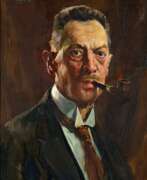

Anton Marussig was an outstanding Austrian artist whose versatile oeuvre spanned the fields of landscape painting, portraiture, figurative and genre painting as well as illustration.
The son of a magistrate, Anton Marussig became a recognised student at the Landscape Drawing Academy in Graz under the tutelage of the renowned Hermann von Königsbrunn. He later continued his education in Munich at the Academy of Fine Arts, where he was taught by outstanding artists such as Gabriel von Hackl, Wilhelm von Lindenschmit and Alexander von Liezen-Mayer.
Marussig received numerous awards and recognitions for his artistic work. His remarkable teaching career began in 1907, when he taught at both the Technical College and the Provincial Art School in Graz. In addition to his teaching activities, Marussig was also active as an industrial painter and received the highest award, the Golden State Medal, in 1912.
In 1913 he became a member of the Austrian Artists' Association. During the First World War, Anton Marussig also contributed to the documentation of this turbulent time as a war painter.


Lisette Model was an Austrian-born photographer who became known for her work in the United States in the mid-20th century. She was began her artistic career as a pianist before turning to photography.
Model's photographic style was characterized by her use of high-contrast black and white images and her interest in capturing the grit and energy of urban life. She often photographed people on the margins of society, such as street vendors, beggars, and nightclub performers, and her images were marked by a sense of empathy and intimacy with her subjects.
In addition to her work as a photographer, Model was also a teacher, and she taught photography at the New School for Social Research in New York City for many years. Her students included Diane Arbus and Bruce Weber, among others, and she was known for her direct and often challenging approach to teaching.
Model's work has had a significant impact on the field of photography, and her legacy continues to inspire new generations of artists. Her photographs are prized for their emotional intensity and their ability to capture the complexities of human experience, and she is remembered as one of the most important photographers of the 20th century.
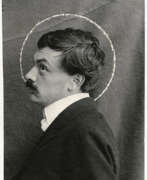

Koloman Moser, an Austrian artist, was a pivotal figure in the Vienna Secession movement and a co-founder of Wiener Werkstätte. His diverse portfolio includes graphic works, fashion designs, stained glass windows, ceramics, silverware, jewelry, and furniture. Moser's style, characterized by precise geometric patterns and a harmonious blend of colors, made a significant impact on 20th-century graphic art and design.
Koloman Moser's work extended beyond art; he designed currency and stamps, notably the Austrian-Hungarian 50 Crown Banknote and a stamp featuring Emperor Franz Joseph. His legacy is preserved in various museums, including the Museum of Applied Arts Vienna (MAK), which hosted a comprehensive exhibition to commemorate the centenary of his death.
For collectors and art enthusiasts, Koloman Moser's creations offer a unique glimpse into the evolution of modern design and the rich cultural tapestry of early 20th-century Vienna. To stay informed about upcoming sales and auction events related to Koloman Moser's work, signing up for updates is an excellent way to stay connected with this influential artist's enduring legacy.
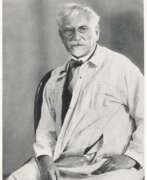

Alfons Maria Mucha, a Czech Art Nouveau painter and decorative artist, was celebrated for his innovative contributions to art, particularly his distinctive style that became synonymous with the Art Nouveau movement. Born in 1860 in the Moravian town of Ivancice, Mucha exhibited artistic talent from a young age, initially showing a proclivity for drawing and music, which were closely intertwined in his perception of creative expression. Despite early financial and educational hurdles, Mucha's passion for art led him to Vienna and subsequently Munich, where he honed his skills and absorbed influences that would shape his future work.
Mucha's career took a pivotal turn in Paris, where his poster for the actress Sarah Bernhardt's play "Gismonda" gained him immediate fame. This partnership with Bernhardt catalyzed a prolific period during which Mucha produced a flurry of artworks, including paintings, posters, and illustrations, as well as designs for jewelry, wallpaper, and theatre sets. His works are characterized by their depiction of beautiful young women in flowing robes, surrounded by lush, natural elements and often featuring pastel colors—a stark contrast to the bold hues preferred by his contemporaries.
Despite his commercial success, Mucha aspired for his art to convey a deeper spiritual message rather than merely adhering to the trendy Art Nouveau style. This led him to undertake projects that were more personal and culturally significant, such as "The Slav Epic"—a series of paintings celebrating Slavic history. Mucha's legacy is not only preserved in his diverse body of work but also in his influence on the aesthetic values of craftsmanship and design.
Collectors and experts in art and antiques continue to venerate Mucha for his unique ability to blend artistic beauty with cultural expression. His works, which are housed in museums and galleries worldwide, remain a testament to his vision and creativity.
For those keen on exploring the world of Alfons Maria Mucha further and staying updated on new sales and auction events related to his work, signing up for updates is an excellent way to ensure you never miss an opportunity to appreciate or acquire pieces related to this iconic artist. This subscription is tailored for collectors and art enthusiasts, focusing solely on new product sales and auction events concerning Mucha's legacy.


Wolfgang Robert Paalen was an Austrian-Mexican painter, sculptor, and art philosopher. A member of the Abstraction-Création group from 1934 to 1935, he joined the influential Surrealist movement in 1935 and was one of its prominent exponents until 1942. Whilst in exile in Mexico, he founded his own counter-surrealist art-magazine DYN, in which he summarized his critical attitude towards radical subjectivism and Freudo-Marxism in Surrealism with his philosophy of contingency. He rejoined the group between 1951 and 1954, during his sojourn in Paris.
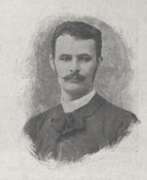

László Pataky was a painter from Austria-Hungary who specialized in rural genre scenes. He initially studied at the arts and crafts school in Budapest then after 1880, at the Academy of Fine Arts, Munich. In 1888, he was awarded a scholarship for his painting "The Messenger", which enabled him to study with Mihály Munkácsy. In addition to working in his studio, he helped him create his monumental painting, "Hungarian Conquest", for the Hungarian Parliament Building. He provided illustrations for numerous novels, including Marriage Without Love by Carmen Sylva, Giovanni Episcopo by Gabriele D'Annunzio, and The Soul of the Baron by Géza Gárdonyi. He also created gouache illustrations for the Vasárnapi Ujság (Sunday News), the Új Idők (New Times) and Magyar Salon (an illustrated monthly magazine).
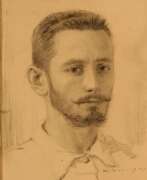

Mark Rubovics is a Hungarian landscape painter.
He studied painting in Vienna, Munich and Paris. Together with Sándor Biháry and Bertalán Karlovský, he founded the Budapest Painting School.
His most famous works are those depicting Lake Balaton.
In 1912, 1921 and 1929, he presented himself with collection exhibitions at the Salon Nationale.


Hubert Sattler was an Austrian painter who also signed works under the pseudonyms Louis Ritschar, E. Grossen and Gottfried Stächli-Richen. He studied painting at the Vienna Academy of Fine Arts.
Hubert Sattler travelled extensively throughout Europe, the Middle East and Latin America, and was known for his large and meticulously detailed cosmoramas of cities, monuments and landscapes of various countries. Cosmoramas were exhibitions of perspective paintings of various places, often world landmarks; careful use of lighting and lenses gave the images great realism.
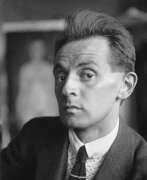

Egon Leo Adolf Ludwig Schiele, an Austrian Expressionist painter, is a figure whose work stands out for its raw intensity and exploration of sexuality, including a remarkable series of self-portraits that often featured nudity. Born in 1890 in Tulln, Lower Austria, Schiele's early life was marked by a fascination with trains and a troubled relationship with his family, especially following his father's death from syphilis when Schiele was just 15 years old. This event propelled him into the care of his uncle, who recognized Schiele's artistic talent despite his lack of interest in traditional academia, leading to Schiele's education at the Vienna Academy of Fine Arts.
Schiele's artistic journey was deeply influenced by his mentor Gustav Klimt, who introduced him to the Vienna Secession and the Wiener Werkstätte, enriching his art with elements of Art Nouveau and paving the way for his distinct style that evolved beyond the influence of his mentor. Schiele's art, characterized by its emotional and sexual honesty, utilized figural distortion to challenge conventional ideals of beauty, making his work groundbreaking for its time.
Throughout his career, Schiele focused on self-portraiture, the human body, and sexuality, often leading to controversy due to the explicit nature of his work. Despite his brief life, cut short by the Spanish flu in 1918 at the age of 28, Schiele's body of work left a lasting impact on the art world. His contributions are celebrated in numerous museums and galleries worldwide, with the Leopold Museum in Vienna housing the most extensive collection of his works, featuring over 43 paintings and 200 watercolors, drawings, and prints. Schiele's work remains influential, offering a stark, introspective look into the human condition and the existential crises of his time.
For collectors and experts in art and antiques, Schiele's work offers a profound exploration of expressionism, culture, and the avant-garde movements of early 20th-century Europe. His legacy is a testament to the power of art to challenge societal norms and to explore the depths of human emotion and sexuality.
To stay informed about new sales, auctions, and exhibitions related to Egon Leo Adolf Ludwig Schiele, consider signing up for updates. This subscription will ensure you're the first to know about opportunities to acquire pieces by this groundbreaking artist, enriching your collection with works that capture the essence of Viennese Modernism.
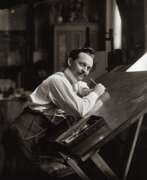

Ferdinand Schmutzer, a distinguished Austrian printmaker, photographer, and portrait painter, hailed from a rich artistic heritage in Vienna. With his great-grandfather, Jacob Matthias Schmutzer, having founded the esteemed "k.k. Kupferstecher-Academie," creativity ran deep in his family. Following in the footsteps of his grandfather and father, Ferdinand initially explored sculpture but later honed his skills in painting at the renowned Vienna Academy. A transformative study trip to the Netherlands sparked his fascination with etchings, inspired by the works of Rembrandt van Rijn. Soon, his exquisite portraits of Vienna's elite garnered widespread acclaim, with prominent figures like Sigmund Freud, Albert Einstein, Kaiser Franz Josef, the Vienna Philharmonic, and Karl Lueger posing for him.
Notably, Schmutzer's art transcended borders, as he exhibited internationally and received numerous awards and accolades. Pioneering the use of larger formats in etching, he pushed the boundaries of the art form, bringing innovation to the technique. Becoming a member of the Vienna Secession in 1901 and later a professor at the Academy of Fine Arts Vienna in 1908, Schmutzer's impact on the art world was undeniable. His legacy lives on, inspiring future generations of artists, and he remains an iconic figure in Austrian art history.
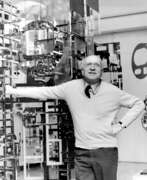

Nicolas Schöffer (Hungarian: Schöffer Miklós) was a Hungarian-born French cybernetic artist.
He built his artworks on cybernetic theories of contol and feedback primarily based on the ideas of Norbert Wiener. Wiener's work suggested to Schöffer an artistic process in terms of the circular causality of feedback loops that he used on a wide range of art genres. His career spans painting, sculpture, architecture, urbanism, film, theatre, television and music. The quest for dematerialisation of the artwork and the pursuit of movement and dynamics became the central themes of his work. He worked with the immaterial media space, time, light, sound and climate that he called the five topologies.
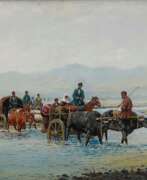

Richard Karl Sommer (Russian: Рихард-Карл Карлович Зоммер) was a Russian and Soviet artist of the late 19th and first third of the 20th centuries of German origin. He is known as a painter, graphic artist and watercolorist.
Sommer is most famous for his works created in Central Asia and Transcaucasia. He painted both domestic and battle scenes there, as well as landscapes of architectural monuments and old city neighborhoods. His paintings are characterized by clear composition and attention to detail, combining features of realism and impressionism, which made them popular among collectors and art connoisseurs.
The master was one of the founders of the Tiflis Society of Fine Arts.


Marceli Gavrilovich Suchorowsky (Russian: Марцелий Гаврилович Сухоровский) was a Russian artist of the last third of the 19th and early 20th centuries. He is known as a portrait painter.
Marceli Suchorowsky was especially famous for his depictions of the nude female body in the salon spirit, in particular the painting "Nana". Exhibitions of this and other paintings of the artist in Russia and abroad were accompanied by special lighting, music, decorated with draperies, furnishings and clothing.


Victor Vasarely, a seminal figure in the Op art movement, was a Hungarian-French artist celebrated for his pioneering contributions to geometric abstract art. Born Győző Vásárhelyi in Pécs, Hungary, in 1906, Vasarely's artistic journey led him to Paris, where he honed a distinctive style marked by optical illusions and kinetic art. By the late 1940s, he had developed his iconic approach, utilizing geometric shapes and a limited color palette to create artworks that seemed to move and vibrate. His work "Zebra," created in 1937, is often cited as one of the earliest examples of Op art, showcasing his fascination with creating the illusion of depth and movement on a flat surface.
Throughout the 1950s and 1960s, Vasarely's exploration into optical effects deepened, leading to significant series like his "Vega" works. These pieces are characterized by their illusionary three-dimensional space, seemingly pushing and pulling the viewer into the canvas. His dedication to optical and geometric abstraction was not just a pursuit of aesthetic innovation but also an exploration of the viewer's perception, making the observer an integral part of the artwork.
Vasarely's influence extended beyond the canvas, impacting architecture, sculpture, and even space exploration. In 1970, he founded the first museum dedicated to his works in Gordes, followed by the establishment of the Fondation Vasarely in Aix-en-Provence in 1976, showcasing his vision of integrating art with the environment. His artworks have found homes in prestigious institutions like the Museum of Modern Art and have been celebrated in exhibitions worldwide.
For collectors and experts in art and antiques, Vasarely's works offer a mesmerizing blend of scientific precision and artistic expression, encapsulating a moment in art history where the boundaries between viewer and artwork blurred. His legacy is a testament to the power of visual perception and the endless possibilities of abstract art.
For those interested in delving deeper into Victor Vasarely's visionary world and perhaps acquiring a piece of this history, signing up for updates on new product sales and auction events related to Vasarely's works is highly recommended. Stay informed and embrace the opportunity to own a part of the optical and geometric abstraction movement that Vasarely so brilliantly pioneered.
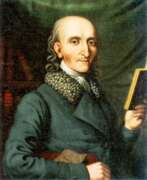

Iosif Zmii-Miklovshik was an outstanding Ruthenian artist, iconographer and portraitist who laid the foundations of professional fine arts in Transcarpathia. His repertoire included iconostasis, frescoes, altarpieces, portraits and picturesque scenes from the life of the Transcarpathian people with a strong ethnographic touch.
Zmii-Miklovshik worked in various cities of Hungary, leaving his creative trace in church murals. After his return from Vienna, he created many works on religious and domestic themes, including paintings such as "Zemplin Wedding", "At a Party", "Procession for the Consecration of Water on Epiphany", and others.
Iosif Zmii-Miklovshikalso familiarised the world with the ethnographic side of the Ruthenians by illustrating the book "Etnografia Ruthenium" by Slovak ethnographer Jan Čaplovič. His works for church altars and iconostases, as well as his many other creative achievements, make him a notable artist in the history of Transcarpathia.
